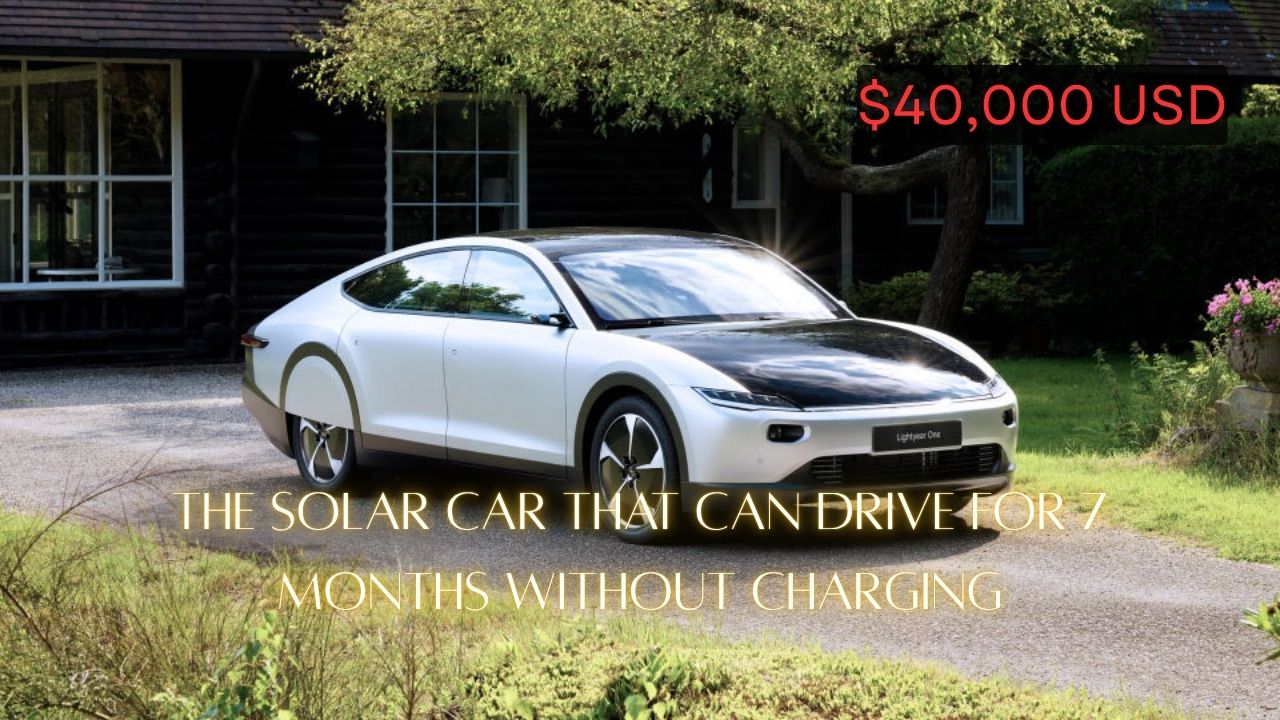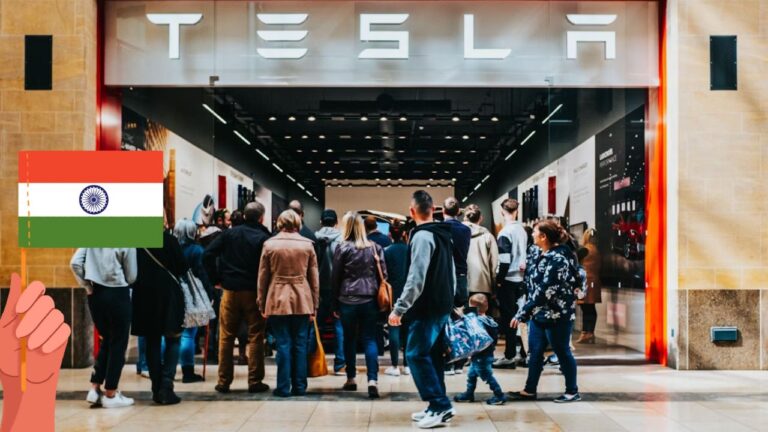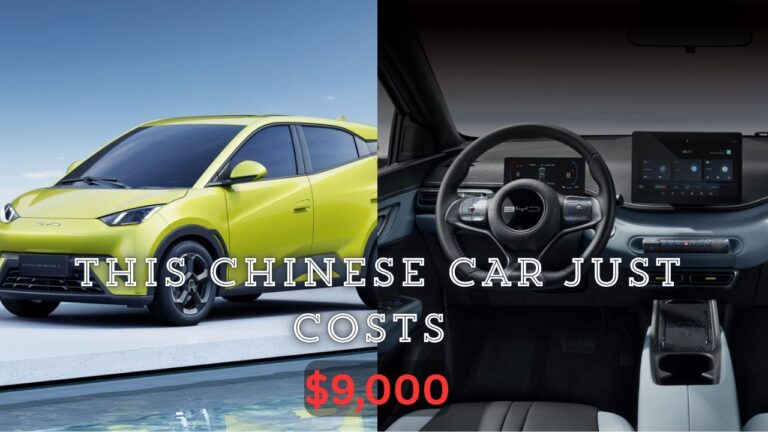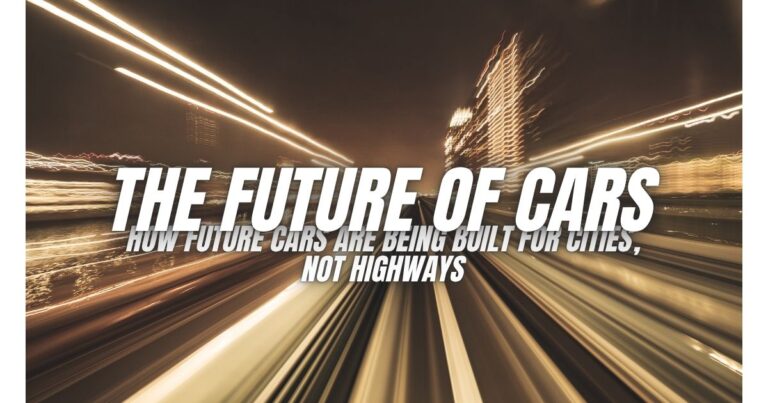A new solar-powered EV claims it can run for 7 months on sunlight alone. It’s not from Tesla — but it might just change everything. Meet the Lightyear 2 and the future of off-grid driving.
A Car That Charges Itself? It’s Here — And It Works
Imagine owning a car that doesn’t need a charger, a gas station, or even a wall plug — for seven straight months.
No, it’s not science fiction. It’s solar-powered reality, and it’s not coming from Tesla.
It’s coming from Lightyear, a Netherlands-based company that’s quietly changing the EV game. Their latest car, the Lightyear 2, promises up to 7 months of driving without a single plug-in — and it’s designed for real roads, not concept stages.
While the world’s been focused on faster charging and bigger batteries, Lightyear took a different path: Why not let the car charge itself?
What Is the Lightyear 2 — And How Does It Work?
The Lightyear 2 is a sleek, highly aerodynamic electric car that looks like the future — but it runs like magic.
Its secret? A full-body solar array built directly into the roof and hood. These solar panels continuously harvest energy from sunlight, trickle-charging the battery every time the car is exposed to daylight.
Here’s how the numbers break down:
- Solar Range: Adds up to 70 km (43 miles) of solar-powered driving per day
- Battery Range: Stores up to 500–800 km (310–497 miles) per full charge
- Charging Interval: In sunny climates (like California, Spain, or Pakistan), owners can go months without ever plugging in
This isn’t a gimmick. In moderate climates, Lightyear estimates users can drive 6,000–11,000 kilometers a year on solar alone.
Tesla Isn’t Building This — Yet
Tesla has dabbled with solar. The Cybertruck has a solar tonneau option. The Model 3 was tested with solar but dropped due to inefficiency.
But no Tesla vehicle currently ships with integrated solar panels capable of meaningfully powering the car. Elon Musk has said the surface area isn’t enough — but Lightyear begs to differ.
They’ve optimized every millimeter of surface area, used ultra-light materials, and engineered extreme aerodynamic efficiency to make solar viable — now, not in the next decade.
So while Tesla pushes faster supercharging, Lightyear is betting on not needing the grid at all.
The Real Impact: Off-Grid Driving
This car isn’t just for showrooms. It’s solving real-world problems:
- No Home Charger? No Problem.
Perfect for urban drivers without garages or wall ports. - Road Trips Without Planning
Forget charge-point apps and detours. Just drive — and let the sun do the work. - Disaster-Proof
Solar cars work during blackouts, fuel crises, or grid failures — something EV owners felt sharply during recent energy shortages in California, Europe, and parts of Asia. - Developing World Ready
In countries where EV infrastructure is lacking, a car that charges itself could be a leapfrog solution, especially for rural or off-grid regions.
Who’s Building the Lightyear 2?
The team behind Lightyear includes engineers from Tesla, Audi, and NASA. Their first prototype, the Lightyear 0, launched in 2022 — a $250,000 proof-of-concept car that demonstrated the tech’s viability.
The Lightyear 2, announced in 2025, brings that dream to the mainstream. Its estimated price? Under $40,000 — cheaper than most high-range Teslas.
Production is being handled in collaboration with Koenigsegg, the Swedish hypercar manufacturer known for pushing the limits of speed, weight, and design.
This isn’t a wild prototype. It’s already passed European crash tests, road certifications, and limited production models are hitting the road this year.
How Long Can You Drive Without Plugging In?
Lightyear claims up to:
- 2 months in cloudy climates (e.g., Northern Europe)
- 4–6 months in moderate sunny zones (e.g., Southern US, Turkey, China)
- 7+ months in high sun zones (e.g., UAE, Mexico, Australia, Pakistan, India)
With typical daily driving under 35 km/day, the solar system covers the average commute entirely through sunlight — no plug, no fuel, no guilt.
How It Compares: Lightyear 2 vs. Tesla Model 3 (2025)
| Feature | Lightyear 2 | Tesla Model 3 (2025) |
|---|---|---|
| Starting Price | ~$40,000 | ~$42,990 |
| Solar Charging | Yes (up to 70 km/day) | No |
| Battery Range | 500–800 km | 570–620 km |
| Charging Needs | Optional in sunny areas | Frequent plug-in required |
| Off-Grid Capability | High | Low |
| Design Focus | Efficiency, solar | Performance, comfort |
The Road Ahead: Are Solar Cars the Future?
Not every car will go full-solar. But Lightyear has proven that solar integration works — and it’s not a pipe dream anymore.
As battery production strains global supply chains, adding free, regenerative energy from the sun is not just smart — it’s necessary.
Other companies are taking notes:
- Aptera in the US is launching a 3-wheeled solar EV
- Sono Motors in Germany tried but pivoted to solar buses
- Hyundai has experimented with solar-roofed hybrids
But Lightyear’s the first to make a car that really works without the grid — for months.
Final Take: The Future of Driving Might Be Solar, Not Supercharged
Electric cars changed how we fuel. Solar cars might change if we need to fuel at all.
In a world of rising energy costs, climate anxiety, and unstable infrastructure, a car that powers itself is more than innovation — it’s independence.
The Lightyear 2 might not beat Tesla in speed or hype. But in 2025, it’s leading the race where it matters:
Freedom, sustainability, and charging from the sky.




